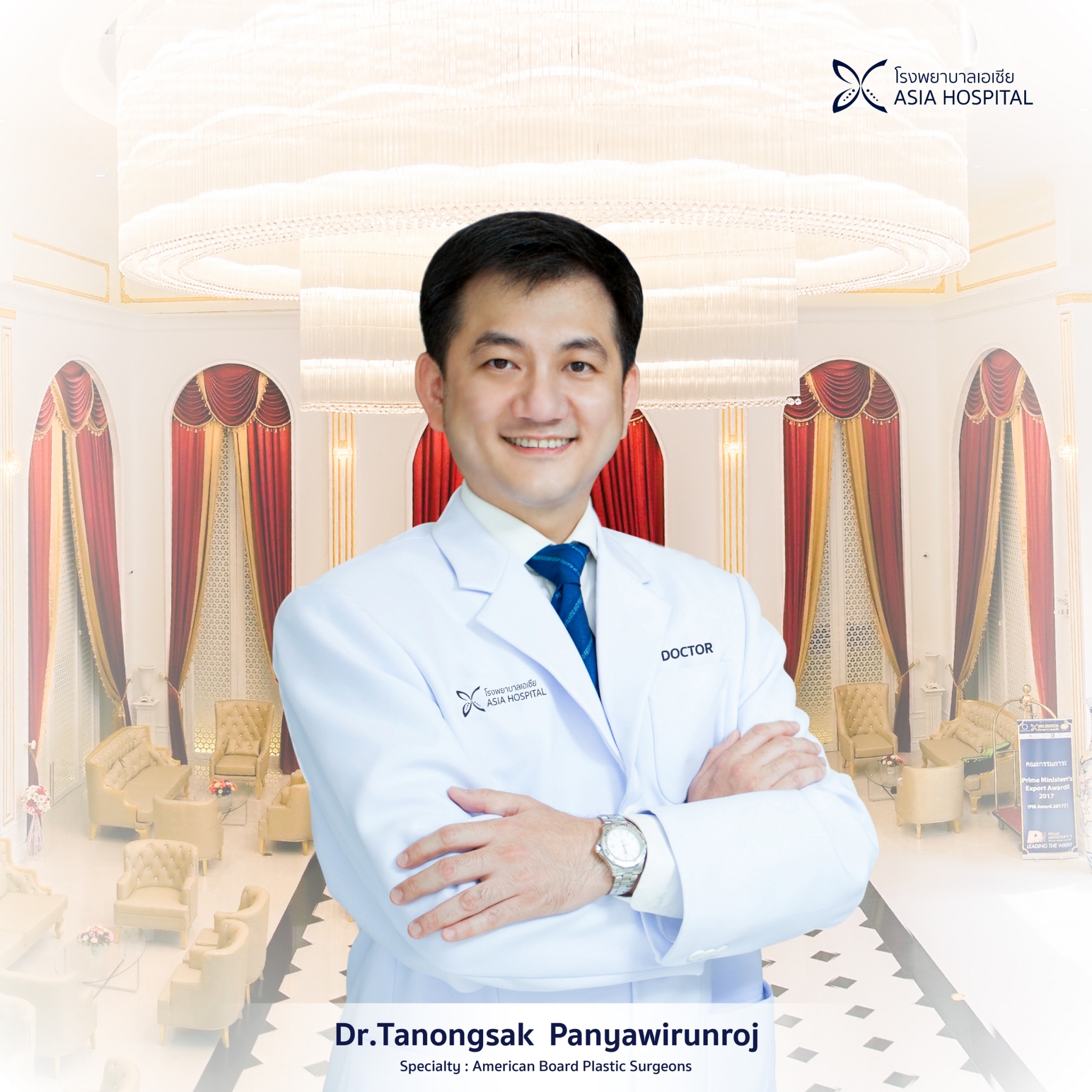Professional Experience
Throughout his career, Dr. Tanongsak has served in both public hospitals and private cosmetic centers. His role as Principal Surgeon at Asia Cosmetic Hospital highlights his leadership in modern surgical techniques.
- 1998–2001: General Practitioner, Phang Nga Province, Thailand
- 2001–2002: Acting Director, Koh Yao Noi Community Hospital
- 2002–2005: Resident in General Surgery, Siriraj Hospital, Mahidol University
- 2005–2007: Resident in Plastic Surgery, Siriraj Hospital, Mahidol University
- 2010–2012: Plastic Surgeon, Kamol Cosmetic Hospital
- 2012–Present: Principal Surgeon, Asia Cosmetic Hospital, Bangkok, Thailand
Academic Contributions
In addition to surgical practice, Dr. Tanongsak is an active contributor to academic development in cosmetic medicine. His teaching and mentorship have shaped the careers of numerous future plastic surgeons.
- Innovative Techniques: Presented the “TANONGSAK Minimally Invasive Technique” for reduction malarplasty at international conferences
- Research Publications: Published studies on surgical techniques in peer-reviewed journals
- Mentorship: Conducts training sessions and workshops for aspiring plastic surgeons
Areas of Expertise
Dr. Tanongsak is well-versed in a broad range of cosmetic procedures tailored to the needs of both local and international patients. He is particularly skilled in facial, breast, and body enhancement surgeries.
- Rhinoplasty: Enhancing nasal structure for improved aesthetics and function
- Blepharoplasty: Eyelid surgery to correct drooping lids and remove excess skin
- Breast Augmentation: Enhancing breast size and shape using implants
- Gender Reassignment Surgery: Comprehensive procedures for male-to-female and female-to-male transitions
- Body Contouring: Liposuction and tummy tucks to sculpt the body
Publications and Research
Dr. Tanongsak’s work has been featured in international medical publications. His research supports the continual improvement of plastic surgery techniques and patient outcomes.
- Minimal Invasive TANONGSAK Technique for Reduction Malarplasty: A study involving 411 patients demonstrating a less invasive approach to cheekbone reduction with high patient satisfaction and minimal complications.
- Inhibition of Collagen Production in Keloid Fibroblasts Using RNA Interference: Research focusing on innovative treatments for keloid scars.
Patient Care Philosophy
Dr. Tanongsak places high importance on patient-centered care and transparency in communication. He believes every patient deserves individual attention and the highest safety standards.
- Communication: Emphasizes clear communication and patient education
- International Patients: Offers online pre-consultations to accommodate their needs
- Cultural Sensitivity: Focuses on individualized treatment plans
- Patient Satisfaction: Committed to patient satisfaction and safety
Professional Affiliations
His affiliations with respected medical societies underline his ongoing commitment to best practices. These memberships ensure access to global advancements in aesthetic medicine.
- Member: American Society of Plastic Surgeons (ASPS)
- Member: International Society of Aesthetic Plastic Surgery (ISAPS)
- Certification: Royal College of Surgeons of Thailand
- Recognition: Korean Association of Plastic Surgeons
FAQs
- Is Dr. Tanongsak Panyawirunroj board-certified?
- Yes, he is certified by the Royal College of Surgeons of Thailand and is a member of international plastic surgery societies.
- What types of surgeries does he perform?
- He specializes in rhinoplasty, blepharoplasty, breast augmentation, gender reassignment surgery, and body contouring procedures.
- Does he treat international patients?
- Yes, Dr. Tanongsak offers services to international patients, including online pre-consultations to accommodate their needs.
- How long is the typical hospital stay?
- Hospital stays vary depending on the procedure, but many patients can expect to stay for 1–2 days post-surgery.
- What languages does he speak?
- Dr. Tanongsak is fluent in Thai and English, ensuring effective communication with a diverse patient population.









